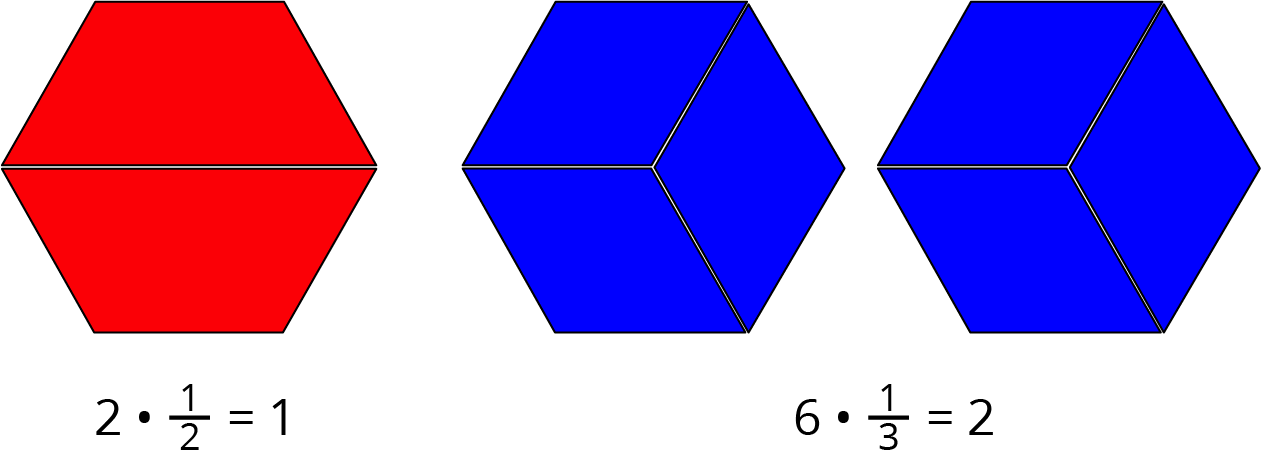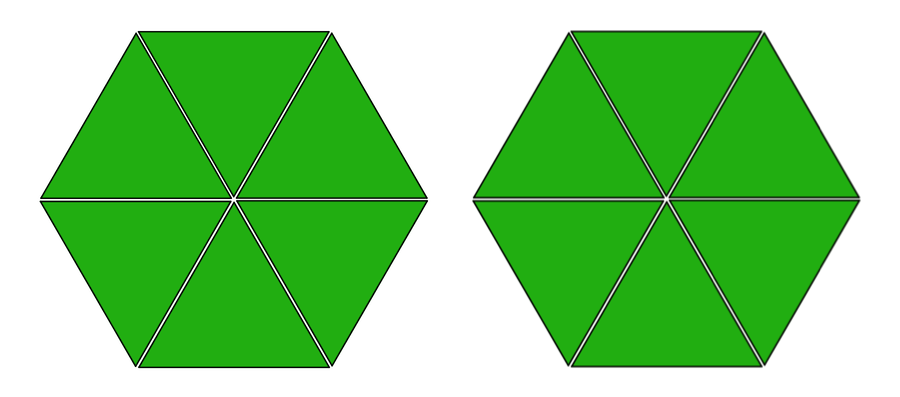Lesson 4
How Many Groups? (Part 1)
Let’s play with blocks and diagrams to think about division with fractions.
4.1: Equal-sized Groups
Write a multiplication equation and a division equation for each sentence or diagram.
- Eight $5 bills are worth $40.
- There are 9 thirds in 3 ones.
-

4.2: Reasoning with Pattern Blocks
Use the pattern blocks in the applet to answer the questions. (If you need help aligning the pieces, you can turn on the grid.)
- If a hexagon represents 1 whole, what fraction do each of the following shapes represent? Be prepared to show or explain your reasoning.
- 1 triangle
- 1 rhombus
- 1 trapezoid
- 4 triangles
- 3 rhombuses
- 2 hexagons
- 1 hexagon and 1 trapezoid
-
Here are Elena’s diagrams for \(2 \boldcdot \frac12 = 1\) and \(6 \boldcdot \frac13 = 2\). Do you think these diagrams represent the equations? Explain or show your reasoning.

- Use pattern blocks to represent each multiplication equation. Remember that a hexagon represents 1 whole.
-
\(3 \boldcdot \frac 16=\frac12\)
- \(2 \boldcdot \frac 32=3\)
-
- Answer the questions. If you get stuck, consider using pattern blocks.
-
How many \(\frac 12\)s are in 4?
-
How many \(\frac23\)s are in 2?
-
How many \(\frac16\)s are in \(1\frac12\)?
-
Summary
Some problems that involve equal-sized groups also involve fractions. Here is an example: “How many \(\frac16\) are in 2?” We can express this question with multiplication and division equations. \(\displaystyle {?} \boldcdot \frac16 = 2\) \(\displaystyle 2 \div \frac16 = {?}\)
Pattern-block diagrams can help us make sense of such problems. Here is a set of pattern blocks.

If the hexagon represents 1 whole, then a triangle must represent \(\frac16\), because 6 triangles make 1 hexagon. We can use the triangle to represent the \(\frac 16\) in the problem.

Twelve triangles make 2 hexagons, which means there are 12 groups of \(\frac16\) in 2.
If we write the 12 in the place of the “?” in the original equations, we have: \(\displaystyle 12 \boldcdot \frac16 = 2\)
\(\displaystyle 2 \div \frac16 = 12\)